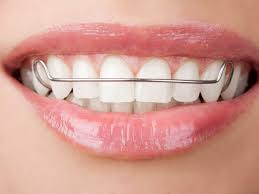Orthodontic treatments like braces and aligners help correct misaligned teeth, but the work doesn’t end once the appliances are removed. Retainers play a key role in maintaining the results of orthodontic treatment, keeping teeth stable and preventing them from gradually shifting back to their original position. Understanding how retainers work and their maintenance requirements can help you make the most of your investment in your smile.
How Do Retainers Keep Your Teeth in Place?
Teeth are not fixed in place; they are surrounded by bone and soft tissues that can shift. Orthodontic treatments move teeth into ideal positions by putting pressure on the surrounding tissue. After treatment, these tissues are still adjusting and may attempt to return teeth to their previous positions. Retainers stabilize the teeth during this adjustment period.
There are two main types of retainers: fixed and removable. Fixed retainers consist of a thin wire bonded to the back of the teeth, while removable retainers are custom-made devices that fit snugly around your teeth. Both options work by holding teeth in place while the surrounding bone and gums continue to settle. Retainers act as a long-term safeguard against unwanted shifting.
How Long Do You Need to Wear a Retainer?
The length of time you need to wear a retainer depends on several factors, such as the type of orthodontic treatment you underwent and the extent of your teeth’s original misalignment. Most orthodontists recommend wearing retainers full-time initially, followed by part-time wear as the teeth stabilize. Typically, patients should wear their retainers nightly or for a number of hours each day after the initial phase of full-time use. The total duration of retention often spans years, or even indefinitely for some individuals. Retainer wear is a long-term commitment that helps the success of orthodontic treatment.
Can a Retainer Fix Minor Teeth Shifting?
Retainers are meant primarily for maintaining alignment rather than correcting major shifts. In some cases, they can fix small movements if caught early. A retainer may gently guide teeth back into position before the shift becomes more pronounced.
For noticeable or ongoing alignment issues, additional orthodontic treatment may be necessary. Retainers are not meant to replace braces or aligners for significant correction. It’s always best to consult your orthodontist if you notice tooth movement, as they can assess whether your retainer is sufficient or if further intervention is required.
What Are the Signs That Your Retainer No Longer Fits Properly?
Over time, your retainer may no longer fit as intended because of normal wear or slight changes in your teeth’s position. Several signs indicate that your retainer might need adjustment or replacement:
- Difficulty inserting or removing the retainer.
- Pressure, pain, or discomfort while wearing it.
- Gaps between the retainer and your teeth.
- Visible damage to the retainer, such as cracking or bending.
If you experience any of these issues, schedule a visit with your orthodontist. Continuing to wear an ill-fitting retainer could lead to further discomfort or fail to maintain your teeth’s alignment. Replacing or adjusting the retainer promptly helps it continue to do its job effectively.
Discuss Retainers with Your Orthodontist
Retainers are an effective tool for keeping teeth aligned after orthodontic treatment. While they don’t require the same level of maintenance as braces or aligners, they do need regular monitoring to confirm their fit and function. Wearing your retainer as directed and addressing any issues early can help preserve your orthodontic results over time.









